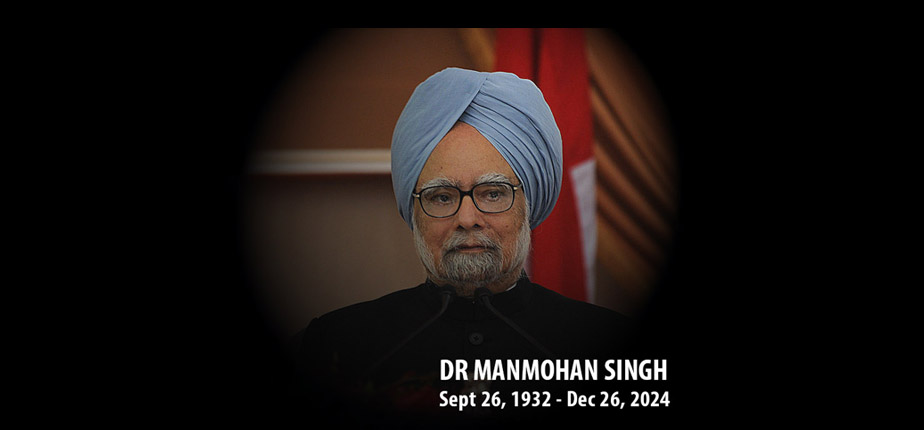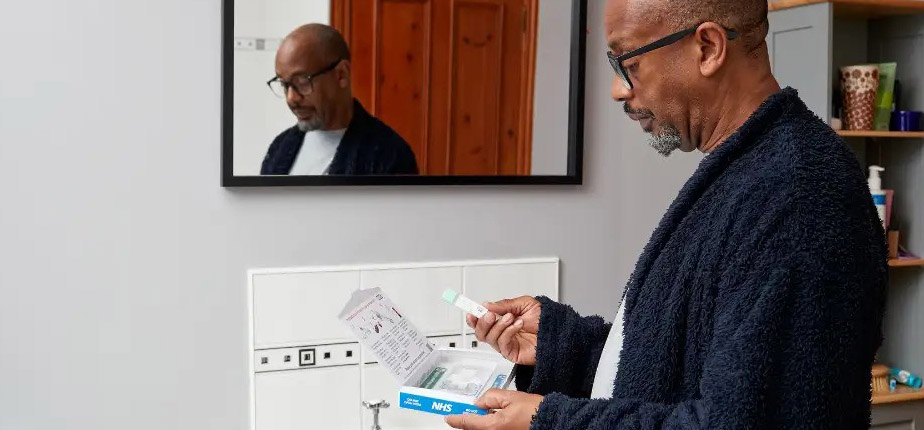
India’s former Prime Minister, Dr Manmohan Singh, known as the architect of the country’s landmark economic reforms that ushered in an era of liberalisation and turned the developing nation into an economic powerhouse, died in New Delhi on December 26 due to age-related medical conditions. He was 92 years old.
Singh was first an academic, then an economist and a bureaucrat, and finally an accidental politician. A Sikh by birth, he became the country’s first and only non-Hindu prime minister and served India in the top role for two straight terms from 2004 to 2014. Despite his achievements, Singh will be remembered even by his detractors as a self-effacing, humble, honest, and wise man.
Born on September 26, 1932, in the small village of Gah in West Punjab, which is now in Pakistan, Singh was forced to move to India in 1947 when the British divided the subcontinent into two independent countries. Displaced from his home at 15, Singh moved from one refugee camp to another with his family until they finally settled in Amritsar, in the Indian state of Punjab. Having lost everything in the Partition, Singh’s family had to start from scratch in their new home, and the young Manmohan had to complete his education with the help of scholarships.
A brilliant student from the beginning, Singh studied economics and earned his bachelor’s and master’s degrees from Panjab University in 1952 and 1954, respectively, excelling throughout his academic career. He also had the distinction of going to both Cambridge University and Oxford University by winning scholarships. In 1957 Singh completed his Economics Tripos at St John’s College, University of Cambridge, and then returned to India to teach at Panjab University.
It was here at Cambridge under the tutelage of Joan Robinson and Nicholas Kaldor that Singh became influenced by the left-wing interpretation of noted economist John Maynard Keynes, maintaining that the state must play a greater role to effectively combine development with social equity. He was influenced by Kaldor, who demonstrated how Keynesian analysis could be made to work in capitalism too. This approach would later inform Singh’s policies as Finance Minister and Prime Minister of India.
In 1960, Singh attended Nuffield College at the University of Oxford for his DPhil. Two years later, he completed his doctoral thesis on ‘India’s export performance, 1951-1960, export prospects, and policy implications,’ which became the foundation for his book India’s Export Trends and Prospects for Self-Sustained Growth.
From 1966 to 1969, Singh went to work for the United Nations Conference on Trade and Development (UNCTAD) in New York, and recognising his talent as an economist, Lalit Narayan Mishra, then Indian Deputy Finance Minister, brought him back to India and appointed him as an advisor to the Ministry of Foreign Trade. From here onwards he entered the Indian bureaucracy, becoming renowned for his expertise in trade and economic planning. Between 1972 and 1987 he held different important positions, including that of chief economic adviser to the finance secretary, Reserve Bank of India governor, and deputy chairman of the Planning Commission of India. He was also Alternate Governor for India at the Asian Development Bank and the World Bank, and a member (finance) at the Atomic Energy and Space Commission.
A mild-mannered technocrat, Singh had no intentions of joining politics. But in 1991, when India was facing a severe balance of payments crisis, the then Indian National Congress (INC) Prime Minister, Narasimha Rao, plucked him out of the bureaucratic brass and made him India’s finance minister. Singh’s first budget marked a watershed moment, laying the foundation for India’s economic liberalisation. Singh dismantled the socialist-era restrictions, opened up India’s economy to global markets, and transformed the country from a near-bankrupt state into a vibrant, growing economy.
Despite his economic achievements, Singh remained aloof from active politics. Hence his ascension to the prime minister’s post in 2004 was completely unexpected. He was asked to take on the position by Sonia Gandhi, wife of the former PM, Rajiv Gandhi, who had led the centre-left INC to a surprise victory in the country’s general election. Sonia was Italian by birth, and her Hindu-nationalist opponents in the Bharatiya Janata Party (BJP) had already made much of her ancestry. Sonia feared that it would be used by her opponents to attack the coalition government if she became prime minister, so she asked Singh to assume the role instead.
Under Singh as Prime Minister, India witnessed an unprecedented period of economic growth, averaging 7.7% for a decade, something that the country is still reaping the benefits of today. Singh shared the spoils of the country’s newfound wealth, introducing welfare schemes such as jobs programmes for the rural poor and passing the Right to Food Act. During his tenure, millions were lifted out of poverty, living standards rose, and India emerged as a global economic power.
In 2008, Singh’s government clinched a landmark deal allowing peaceful trade in nuclear energy with the United States, marking the first time in 30 years, and paving the way for strong relations between New Delhi and Washington. As Prime Minister, Singh prioritised diplomacy, steered India through global economic challenges, and strengthened its position on the world stage. In his tribute, US President Joe Biden said his country’s “unprecedented level of cooperation” with India would not have been possible without Singh’s “strategic vision and political courage.” Biden called him “a true statesman, a dedicated public servant. And above all, he was a kind and humble person.”
Singh is remembered as a generous, humane, and hard-working person who lived to serve his community and his country. He was understated and soft-spoken, modest and humble despite his brilliance, which allowed him to attract the brightest and the best.
He was a man of great integrity, never using any of his offices for personal gain or to benefit his family. Though his government faced corruption scandals in its last two years, he remained untainted. Even the corruption allegations against his government have not withstood judicial scrutiny and are now seen as lies just to bring down the INC.
At a press conference just months before he left the prime minister’s chair, Singh said he had done the best he could for his country and that “history will be kinder to me than the contemporary media or the opposition parties in parliament.” He was absolutely right. He is survived by his wife, Gursharan Kaur, and three daughters.
Photo: Prime Minister Manmohan Singh, Hyderabad House in New Delhi July 29, 2010.
(Credit: 10 Downing St/Flickr CC)
Sajeda Haider


